Carl Williams was healthier than ever, his post-mortem examination would show. His baby face had hardened with exercise and the giving up of the everyday poisons. He pounded the treadmill because “it keeps me sane”, and he was 30kg lighter than his arrest weight in 2004.
He wrote this proudly, again and again, from his Barwon prison cell after he got a computer in 2008.
Jotting off letters to family, friends and women — hundreds of them, most signed off with a dirty joke — buoyed his mood, too.
Read in their entirety, Williams’ words showed a dry wit and a regard for others.
He cared what people thought and offered favours freely.
PART 8: HOW WE UNCOVERED THE TRUTH
LIFE & CRIMES PODCAST ON iTunes, WEB OR SPOTIFY
If he sounded more human, as he pointed out, than public perceptions, he also sounded more vulnerable. For the letters depicted a lonely, anguished soul who verged on depression in the months before he was killed in April, 2010.
Williams was worried about time — too much of it.
The treadmill “clears my mind” but also armed him for his daily battle with boredom.
A 35-year stretch was “one hell of a hill to climb”; he had missed his daughter’s first day at school, and he would miss her 21st birthday.
There were other issues. He was heartbroken, perhaps for the first time.
He had been engaged to Stacey, who was 22 and visited him twice a week.
He was so besotted, he admitted, that he had lowered his guard and trusted her, which made her betrayal with another man so catastrophic. Heartbreak, Williams joked, was also another way to lose weight.
The bogan nonchalance of his TV portrayal was dimmed: after five years inside, Williams was “broken”, says one confidant. Not that the star character himself thought much of Underbelly— “it would be lucky to be 5 per cent of the truth”.
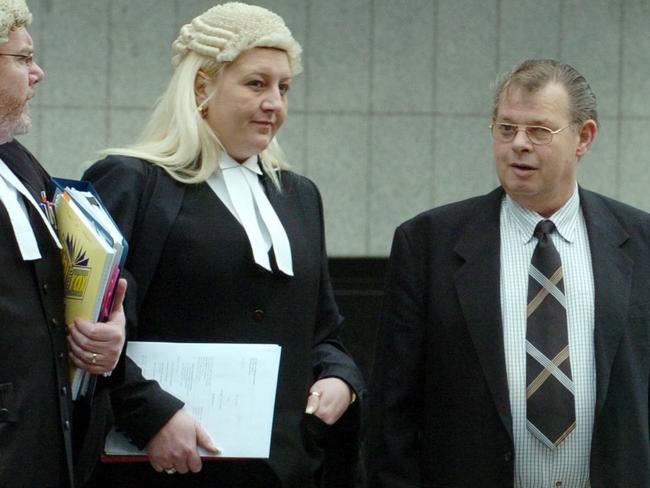

Williams was privately rewriting his own history, too.
He wasn’t bad, he told friends, just a bloke compelled to bad acts to protect himself and his family. And he was paying for it — unfairly.
He had helped the authorities — why couldn’t they help him, he wrote at one point, with trifles like a chopping board and an oven? He was obsessed with small things, even if he possessed the self-awareness to recognise this. Robbed of responsibility and power, drugs and menace, Williams’ currency was gossip and perks.
For months, Williams had longed for “self-catering” in his high-security unit, in which food could be bought in and cooked by prisoners. He shared Acacia Unit 1 with his good mate Tommy Ivanovic, who was his daughter’s godfather. Tommy was a “great cook”.
Between 8am and 3.30pm each day they shared the exercise room with Matty, or Matthew Charles Johnson, another mate who Williams had asked to be housed with. Williams, who constantly inquired about which prisoners were where within Barwon jail, should have chosen better. Johnson had once terrorised a mother and her teenage daughter. He was suspected of shooting dead a kid over $50. His was an existence of impulse and incarceration, coupled with his death stare, that projected a caged animal menace.
Williams’ selection of Johnson lacked the shrewdness of his gangland rule, given Johnson turned out to be Williams’ killer.
The night before Williams’ death, his fellow prisoners had howled like dogs. Williams was alarmed by the taunting.
He had been identified as a snitch, and snitches got hurt.
In recent months, Williams had set out to put down a prison rumour that he was involved in former detective Paul Dale registering a friend, “Stretch”, as a police informer. In a letter to a fellow prisoner, his tone was conciliatory: “I was not responsible in any way, shape or form … I’m a straight shooter, and I say it how it is.”
Yet Williams had made three statements against Dale, the first in 2007. He said that Dale had in 2004 hired him to kill Terry Hodson, because Terry was a police informer who had implicated Dale in a drug-house burglary. Each statement had been more detailed than the last. His motivation was simple enough.
As he explained to Horty Mokbel, Tony’s brother, just a couple of cell units away: “Dale is a copper and like you said, f--- him …”
There was more. The police had agreed to inducements, including the payment of his father’s $750,000 tax bill. The biggest incentive was a 10-year reduction on Williams’ sentence, in a deal being negotiated with the Office of Public Prosecutions.
WHAT WAS THE GANGLAND WAR ALL ABOUT?

Yet Roberta Williams says her ex-husband had belatedly decided to renege.
“I don’t want to do this, Bert,” Williams apparently told his ex-wife. “There’s too much at risk. I’m pulling out today.”
They spoke on the phone for about 20 minutes before Roberta Williams had to go. It was the morning of April 19, 2010. She had a photo shoot with New Idea.
Williams had read the morning headlines about his daughter’s school fees being paid. The story would be linked to what happened next. He was still scanning the Herald Sun when Johnson crept up behind him, gripping an exercise bike stem bar.
Crack.
Williams fell from the first blow.
There were seven blows in all.
Crack.
Crack.
Crack.
Crack.
Crack.
Crack.
Photos of the pulp would later circulate.
Williams probably never knew a thing. His skull would be likened to a smashed eggshell.
Williams had been right, though not in the way he thought. Time was his enemy; he just didn’t have enough.
Roberta Williams heard the news straight after her photoshoot. She arranged a service booklet for his funeral featuring the skyline of the city he once believed he ran.
Her sense of grief and outrage spills over to this day. Many others, including Dale, were less saddened. Gobbo benefited, too.
She was aware of the inducements to Williams to assist police before his death. At the same time, she was combating police pressure to provide information about Dale. Gobbo was to be the star witness in the prosecution of Dale for the murders of Terry and Christine Hodson. How Gobbo was privy to such sensitive information remains uninvestigated to this day.
ESKY MURDER CARL GOT AWAY WITH
Johnson said at his murder trial that Williams had been “spinning a yarn”.
He had seen the statements against Dale before he killed Williams.
“He said that they knew he had had dealings with Dale and he could just fill in the spots for the rest of it and they’d gobble it up,” Johnson said.
Such claims would not be tested. Dale’s trial had already been delayed before Williams’ death. Dale’s defence team had subpoenaed truckloads of police documents at the committal hearing stage.
Then a star witness had called in sick. Her name was Gobbo.
“It was clear to investigators,” Dale later said, “that (she) was playing both sides of the fence.”
In 2008, however, Gobbo’s conflicted status had not been clear to Dale.
She had worn a wire for a coffee meeting with him in Albert Park. They spoke about Williams’ first statement to police, before being joined by Dale’s wife and children. Dale described Williams’ statement as “very accurate”: “Some things that came out that clearly only him and me know”.
Later, on learning of her deception, Dale was incensed. He felt Gobbo had broken the “cardinal rule” of lawyer-client privilege (Gobbo countered that she was not Dale’s lawyer).
The wider legal fraternity was shocked when “Witness F” was identified. Stunned at hearing the news from Gobbo herself, a leading QC almost jammed his fingers in a car door.
Gobbo told the Herald Sun she felt compelled to wear a wire for Hodson’s children.
This tallies with what a police acquaintance reported of her early motivations for informing: “I can’t look in the mirror, I can’t stand working for these scumbags.”
In 2009, there were also inducements — or so she set out in a subsequent claim against Victoria police.
The Hodson killings had, belatedly, inspired a police taskforce, called Petra, in 2007.
Its detectives had spoken to Gobbo about her use of burner phones — with Dale, as well as then client Azzam Ahmed — in informal interviews through 2008.
In December that year, say police, Gobbo called them to say Dale wanted to meet her. Police say she offered to wear a wire — a point she disputes.
She wore the wire, recorded Dale, provided a statement, and waited.

Dale was charged with murder in February, 2009.
Dale had been refused bail when Justice Marilyn Warren found that he posed an unacceptable risk of interfering with witnesses.
Deputy Commissioner Kieran Walshe wrote to Gobbo about “very serious threats against you” and “the major risks you now face”.
It was a fraught time. Dale was granted bail in September, despite the objections of chief prosecutor Gavin Silbert SC: “To put it crudely, organising an execution has to be more difficult from prison than outside.”
She was admitted to hospital for 17 days for various conditions she said were aggravated by stress. Walshe wrote to her that “ad hoc security arrangements represent(s) an unacceptable security risk to the health and safety of the police officers who have been protecting you”.
By March, 2010, after police had resorted (unsuccessfully) to summonsing Gobbo to court, police conceded it “was not able to manage the risk to (Gobbo’s) safety unless she agreed to enter the witness protection program on terms offered”.
She, too, was nonplussed, claiming the plan for a “security incident’’ was “run for your life’’.
Frustrations deepened. On a day Gobbo claimed she was medically unfit to attend Dale’s committal hearing, she was spotted “enjoying the sunshine” at a Port Melbourne café, a crutch perched against her table. The unofficial police feeling was that Gobbo was genuinely unwell, but not so sick that she could not give evidence; that Gobbo had changed her mind and would not enter the witness box.
The police argued that Gobbo refused to change her identity, or relocate to safe areas, or indeed, “refused to acknowledge and accept the existence of a serious risk to her security and welfare”. She did not counter offers with offers of her own.
On April 19, 2010, she was offered alternative accommodation outside Melbourne with specialised protection. That same day, the other star witness in the case against Dale, Carl Williams, was killed while under 24-hour protection in jail.
DEATH STARE: CARL’S EVIL KILLER
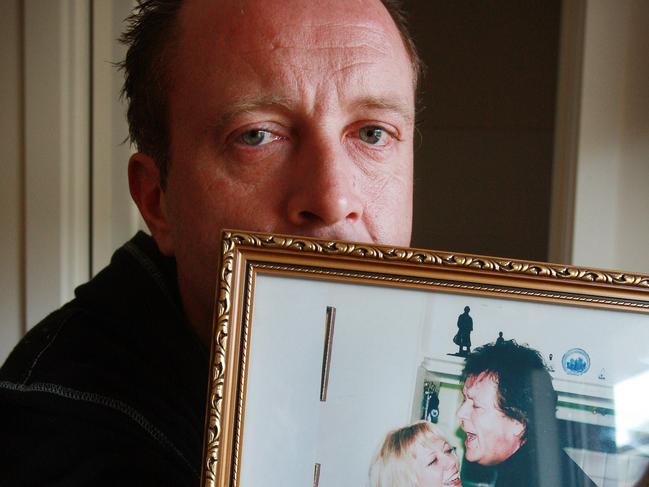
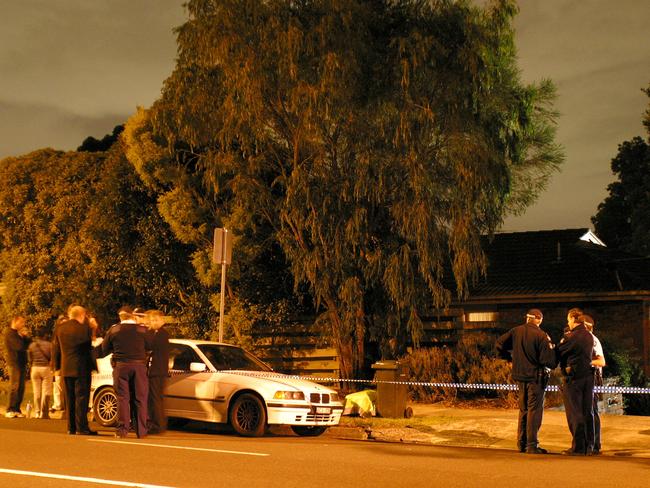
Gobbo rejected the police offer the next day.
Nine days later, she filed a $20 million lawsuit against Victoria Police.
Six months earlier, she had made $20 million a condition of giving evidence. Tallied up, she now said, it represented the cost of her career, reputation and possibly her life.
In the end, she is thought to have received $3 million — and much more.
Gobbo’s legal claim — and the police counter claim — provided compelling headlines. The documents concurred on how police guarded her for trips to Bali and Queensland. Police paid the $344 Gobbo was out for Pink concert tickets when police said it was unsafe to attend.
She argued that the police were too inflexible about how they were to look after her safety.
Gobbo spoke of an “unreasonable insistence” that she change her identity. Her real name — a blueblood calling card in legal circles — has always been important to her.
The lawsuit and the response offer glimpses into the shifting dynamics between the lawyer and the police. It appears now — given that it is revealed that she was police informer 3838 — that secrets lay heaped on secrets. Her proximity to Simon Overland was hinted of in a media interview alluding to their personal correspondence.
FOLLOW EVERY TWIST IN THE LAWYER X SAGA HERE
Her civil claim was settled out of court soon after the murder case against Dale was dropped.
Gobbo had officially relinquished her law chambers. Yet her legal career was not over.
She was advising Rob Karam, the drug importer. And Mokbel too, despite tricky questions about her “police informer” label in the Dale hearings.
The settlement included minimal police contact with Gobbo and assurances that she would not be called as a prosecution witness in future trials.
Further, investigators newly armed with an Australian Federal Police intercept of a phone call of Gobbo speaking to Mokbel would be barred from questioning her about it.
The disappearance from the St Kilda Rd police complex of a so-called Blue File, which detailed 31 reports of informing by Hodson, had prompted an Office of Police Integrity report in 2005, headed by Tony Fitzgerald QC.
Gobbo may have appeared at that inquiry, but the Mokbel/Gobbo phone call was not thought to be known to Victorian investigators at that time.
But after Williams’ fatal bashing, Petra investigators received the intercepted call tape.

Her status as a key witness had shifted to person of interest.
Yet the interview never went ahead.
Some close observers believed that the shutdown of the Hodson murders taskforce was linked to the plan to question Gobbo.
Curiously, however, she assisted investigators on Operation Driver, the taskforce that looked into Williams’ death, soon after her purported $3 million compensation payout.
Her former boss, lawyer Alex Lewenberg, was always fond of Gobbo, though he fretted from the start. She arrived for work at his Richmond office one morning in a police car. He spoke to her of a “bad look” and “crossed lines”.
Lewenberg was representing Hodson in late 2003 when Hodson got bail for the burglary.
Lewenberg feared for Hodson’s wellbeing at the time, figuring that he was safer inside jail than out.
He describes Gobbo, with affection, as “immature, “short tempered” and “irrational”. Bright and generous, she’s a “wild child”.
Lewenberg is well-placed to judge human nature: he’s been shot at, stabbed, had his home firebombed and been attacked by a woman with a baseball bat.
He was taken aback when he learned of Gobbo’s intimate proximity to both the Hodsons and those implicated in their deaths. He says it’s why he stopped briefing Gobbo for cases.
Years on, Dale remained puzzled. “To this day, I don’t understand why Gobbo crossed to the side of the prosecution rather than the defence,” he wrote.
“I can only wonder if the police had something on her to make her do it.”
One trial remained — a 2013 Supreme Court contest concerning charges of lying brought by the Australian Crime Commission (ACC) against Dale. The ACC case rested on Gobbo’s wire recording of Dale and her testimony.
But at a preliminary hearing a prosecutor told the court Gobbo would not be taking the stand.
Her statement was removed from the brief of evidence. Behind the scenes harried negotiations had swirled between Victoria Police brass and the Commonwealth prosecutors.
With Gobbo’s withdrawal, about half of 23 charges were dropped. Dale’s barrister, Geoffrey Steward, branded Gobbo the “baroness of treachery’’ during the trial.
Steward had no idea that Gobbo had been a registered police informer, yet he described her as “an excuse for a lawyer”.
Lawyers for Gobbo spoke of “extreme” threats against her safety. Her lawyer had received a “sympathy” card. It stated: “Tell your client she is dead. Dogs die dead.”
Police never traced the source of the menacing, which help elevate Gobbo to what was the highest risk category of police witness informant.
Dale was found not guilty on all ACC charges.
HITMAN TAKES HODSON SECRETS TO GRAVE
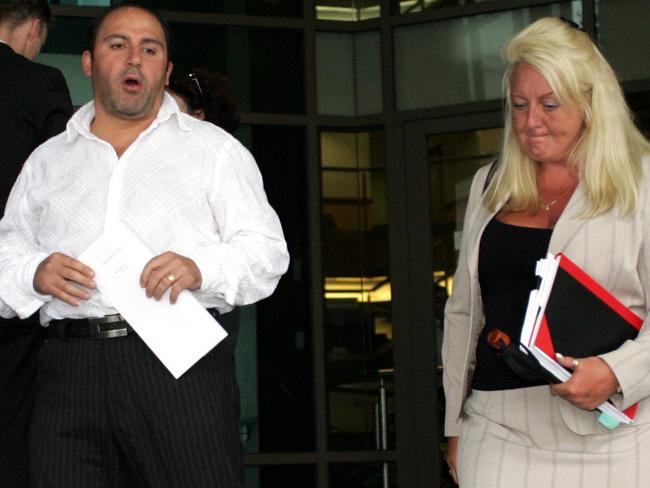
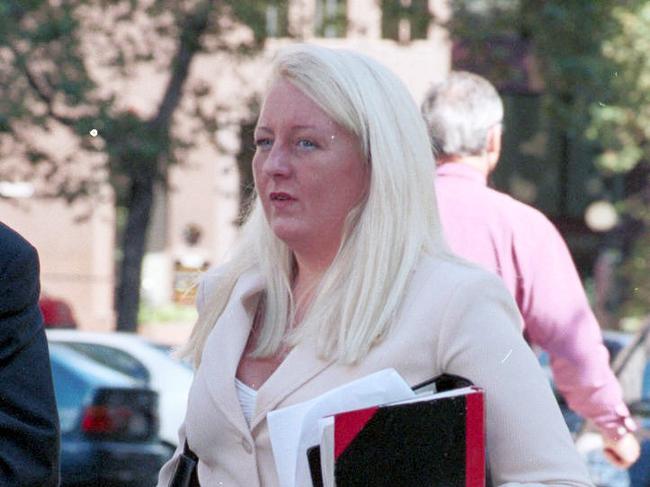

WILLIAMS’ death threw up a macabre symmetry to the Dale saga.
Williams, like Hodson, was killed before Dale could face trial. Both made choices that put them in peril. Both were let down by authorities who lacked the professionalism and insight to appreciate that risk.
Something else binds them, too: both died immediately after prominent newspaper stories referred to their police informing.
The Driver taskforce, headed by then Superintendent Doug Fryer, would later clear Dale of any involvement in Williams’ death. Fryer called Dale an “unwitting beneficiary”.
Other members of the taskforce are interested in the fact that the third man in the exercise room where Williams was killed, Tommy Ivanovic, and another powerful underworld figure grew up in Brunswick together.
Before his death, police were urging Williams to make a statement identifying the underworld figure as the gunman in an outstanding gangland killing.
Soon after Williams’ bludgeoning, Ivanovic made a call — to that very underworld figure.
The day before he died in 2004, Hodson was alluded to as a “police informer” in a Herald Sun story that spoke of a contracted hit on Carl Williams’ life. The report suggested that Hodson, who was unnamed in the story, had told Dale he had a few years earlier been offered (and declined) a contract to kill Williams for $50,000.
Hodson lived beneath the public gaze — in death he garnered notoriety and sympathy. In contrast, Williams’ informing — and its resulting spoils — was splashed across the front page on the day he died.
Detective Sergeant Sol Solomon interviewed the suspected Hodson shooter Rod Collins repeatedly.
Collins sought deals and spoke cryptically. He posed questions instead of making statements in suggesting that more than one person was involved in the Hodson killings. Collins might have been making mischief when he asked: “But who was the person that was behind that known or trusted person, that followed him in?”
Williams, in his police statement against Dale in 2007, showed he knew something about the law. “He said it had to be done before his committal,” Williams said of the purported plot to kill Hodson.
“I knew why because if the evidence goes in at committal it can still be used if the witness is dead at the trial.”
The legal cases go on. Andrew and Mandy Hodson resubmitted a civil claim against Victoria Police in October. The writ argues that Terry Hodson should have been informed that the Blue File — containing the history of his police informing — had been stolen from the St Kilda Rd police headquarters. If police had notified him, the claim goes, he would have taken greater care to protect himself and his family and gone into witness protection.
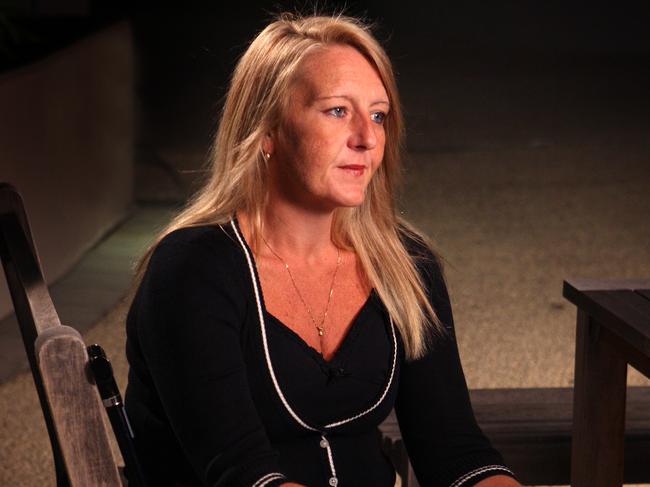

Charlie Bezzina first spotted a joint in the ashtray.
Then the uniformity of the bodies. He would get to the hidden chemicals and the .45 pistol later.
Here, the Hodsons’ murder scene, was something like his 150th in a homicide squad career over 17 years. It would also be the “clusterf---” that precipitated the end of Bezzina’s career.
Dale firmed as a suspect at once. Bezzina arrested him and brought him in for a two-hour chat. Dale explained he had been in Bendigo all weekend. He was precise with details and Bezzina wondered if he was “over-alibied”.
Bezzina interviewed Gobbo. She was one of dozens of interviews, some suspects, to be eliminated.
Gobbo was Hodson’s lawyer, nothing more, and Bezzina treated the chat as a formality.
Bezzina has the matter-of-fact way of a homicide cop who knows too much. He chortles rather than laughs, as if poised in a mental crouch after decades of poking around bastards and blood pools. Few things surprise him.
Yet he was caught unawares by Gobbo’s duplicity. He didn’t hear the rumour that her testimony was considered unconvincing at a closed Office of Police Integrity hearing in 2004 or 2005. The whisper goes that Fitzgerald told her to “go away and think about her evidence”.
“She was good on her feet and good in court,” Bezzina says. “She was staunch in arguing that cops are corrupt and she was a staunch defence barrister. Nothing shocked me more greatly than when I worked out that she was a police informer.”
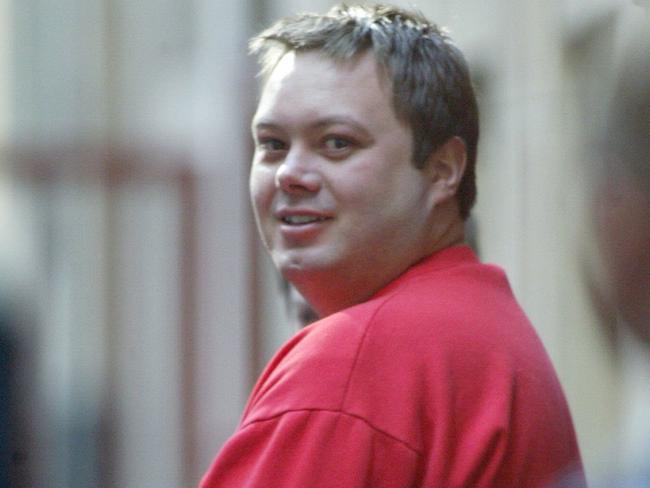

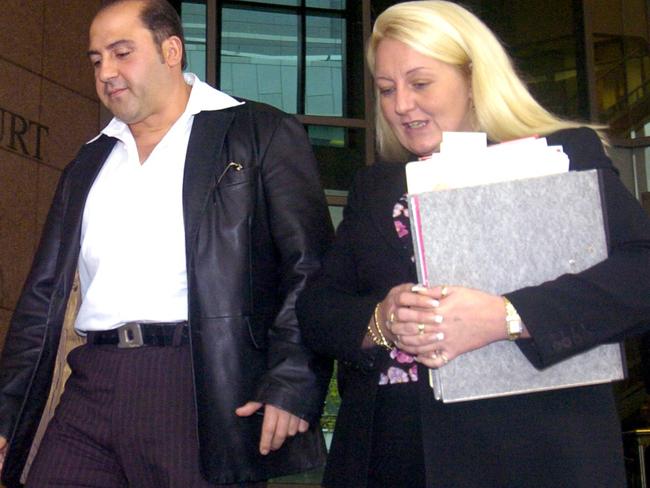
Herein lay the problem.
Facts, such as Gobbo’s conflicted status, were kept from Bezzina’s investigation by police superiors. Were there bigger police issues than murders to solve?
Bezzina was not made aware of Dale’s conversations with Williams. He did not know about the phone intercepts of Gobbo and Mokbel speaking about their friend “Pauline”.
He had no idea that Gobbo, Hodson’s lawyer, had met repeatedly with Dale, the chief suspect, in the months, before Hodson’s death.
Some of this intelligence was held by the Purana taskforce and the Ethical Standards Department.
Bezzina may have been a celebrated cop whose presence on the case lent it gravitas. He reported regularly to Overland, the then assistant commissioner of crime.
Yet his homicide investigation was impeded by Victoria Police. Bezzina didn’t stand a chance. He was “window dressing”, he says, the “shopfront”, that allowed other departments the space to pursue their own agendas. Harry Bosch, the fictional LA detective in the Michael Connelly series, has a name for game-playing and paranoiac politics. Bezzina was a victim of a serious case of “high jingo”.
He interviewed Dale once — because he lacked relevant information to question him further.
Weekly briefings with command slowed to monthly meetings. When Carl Williams named Dale as the Hodsons’ killer in 2007, Bezzina was left off the taskforce that explored the claims.
The slight tainted Bezzina’s name, he says. He left the force soon afterwards with a farewell from Overland: “I knew you wouldn’t solve it.”
MORE CRIME:

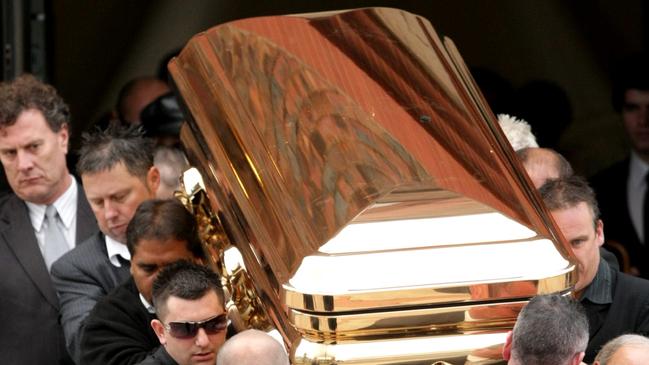
$500,000 offer: Mushroom murder spurs media frenzy
The estranged husband of triple murderer Erin Patterson has been inundated with lucrative media offers.
‘I miss being able to talk to them’: Tribute for slain Aussie brothers
A tribute has been unveiled where Australian brothers Jake and Callum Robinson and their American friend were murdered during a surf trip.